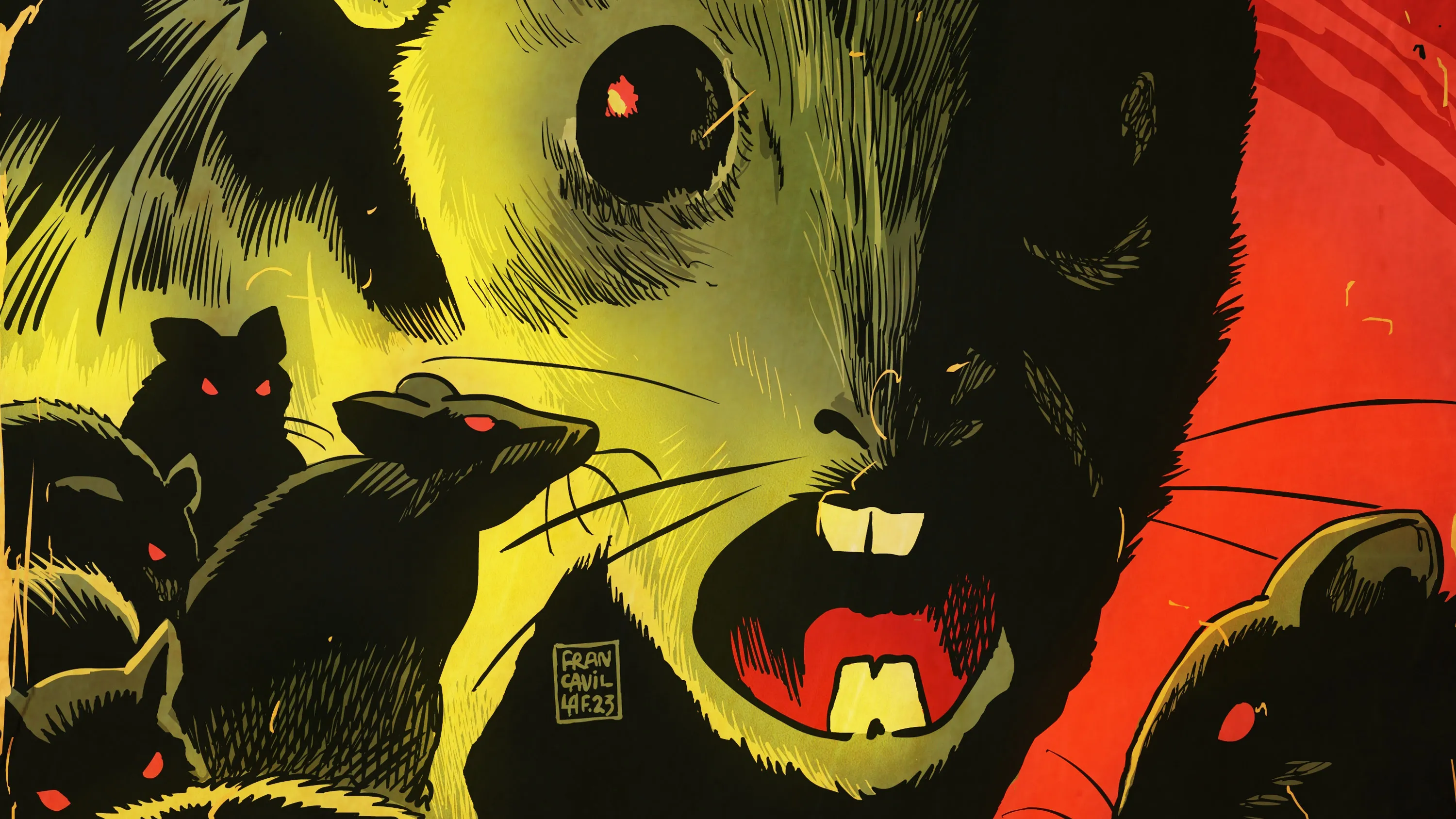
ChatGPT launched in 2022 and kicked off the Generative Ai boom. In the two years since, academics, technologists, and armchair experts have written libraries worth of articles on the technical underpinnings of generative AI and about the potential capabilities of both current and future generative AI models.
Surprisingly little has been written about how we interact with these tools—the human-AI interface. The point where we interact with AI models is at least as important as the algorithms and data that create them. “There is no success where there is no possibility of failure, no art without the resistance of the medium” (Raymond Chandler). In that vein, it’s useful to examine human-AI interaction and the strengths and weaknesses inherent in that interaction. If we understand the “resistance in the medium” then product managers can make smarter decisions about how to incorporate generative AI into their products. Executives can make smarter decisions about what capabilities to invest in. Engineers and designers can build around the tools’ limitations and showcase their strengths. Everyday people can know when to use generative AI and when not to.
Imagine walking into a restaurant and ordering a cheeseburger. You don’t tell the chef how to grind the beef, how hot to set the grill, or how long to toast the bun. Instead, you simply describe what you want: “I’d like a cheeseburger, medium rare, with lettuce and tomato.” The chef interprets your request, handles the implementation, and delivers the desired outcome. This is the essence of declarative interaction—focusing on the what rather than the how.
Now, imagine interacting with a Large Language Model (LLM) like ChatGPT. You don’t have to provide step-by-step instructions for how to generate a response. Instead, you describe the result you’re looking for: “A user story that lets us implement A/B testing for the Buy button on our website.” The LLM interprets your prompt, fills in the missing details, and delivers a response. Just like ordering a cheeseburger, this is a declarative mode of interaction.
Explaining the steps to make a cheeseburger is an imperative interaction. Our LLM prompts sometimes feel imperative. We might phrase our prompts like a question: ”What is the tallest mountain on earth?” This is equivalent to describing “the answer to the question ‘What is the tallest mountain on earth?’” We might phrase our prompt as a series of instructions: ”Write a summary of the attached report, then read it as if you are a product manager, then type up some feedback on the report.” But, again, we’re describing the result of a process with some context for what that process is. In this case, it is a sequence of descriptive results—the report then the feedback.
This is a more useful way to think about LLMs and generative AI. In some ways it is more accurate; the neural network model behind the curtain doesn’t explain why or how it produced one output instead of another. More importantly though, the limitations and strengths of generative AI make more sense and become more predictable when we think of these models as declarative.
LLMs as a declarative mode of interaction
Computer scientists use the term “declarative” to describe coding languages. SQL is one of the most common. The code describes the output table and the procedures in the database figure out how to retrieve and combine the data to produce the result. LLMs share many of the benefits of declarative languages like SQL or declarative interactions like ordering a cheeseburger.
- Focus on desired outcome: Just as you describe the cheeseburger you want, you describe the output you want from the LLM. For example, “Summarize this article in three bullet points” focuses on the result, not the process.
- Abstraction of implementation: When you order a cheeseburger, you don’t need to know how the chef prepares it. When submitting SQL code to a server, the server figures out where the data lives, how to fetch it, and how to aggregate it based on your description. You as the user don’t need to know how. With LLMs, you don’t need to know how the model generates the response. The underlying mechanisms are abstracted away.
- Filling in missing details: If you don’t specify onions on your cheeseburger, the chef won’t include them. If you don’t specify a field in your SQL code, it won’t show up in the output table. This is where LLMs differ slightly from declarative coding languages like SQL. If you ask ChatGPT to create an image of “a cheeseburger with lettuce and tomato” it may also show the burger on a sesame seed bun or include pickles, even if that wasn’t in your description. The details you omit are inferred by the LLM using the “average” or “most likely” detail depending on the context, with a bit of randomness thrown in. Ask for the cheeseburger image six times; it may show you three burgers with cheddar cheese, two with Swiss, and one with pepper jack.
Like other forms of declarative interaction, LLMs share one key limitation. If your description is vague, ambiguous, or lacks enough detail, then the result may not be what you hoped to see. It is up to the user to describe the result with sufficient detail.
This explains why we often iterate to get what we’re looking for when using LLMs and generative AI. Going back to our cheeseburger analogy, the process to generate a cheeseburger from an LLM may look like this.
- “Make me a cheeseburger, medium rare, with lettuce and tomatoes.” The result also has pickles and uses cheddar cheese. The bun is toasted. There’s mayo on the top bun.
- “Make the same thing but this time no pickles, use pepper jack cheese, and a sriracha mayo instead of plain mayo.” The result now has pepper jack, no pickles. The sriracha mayo is applied to the bottom bun and the bun is no longer toasted.
- “Make the same thing again, but this time, put the sriracha mayo on the top bun. The buns should be toasted.” Finally, you have the cheeseburger you’re looking for.
This example demonstrates one of the main points of friction with human-AI interaction. Human beings are really bad at describing what they want with sufficient detail on the first attempt.
When we asked for a cheeseburger, we had to refine our description to be more specific (the type of cheese). In the second generation, some of the inferred details (whether the bun was toasted) changed from one iteration to the next, so then we had to add that specificity to our description as well. Iteration is an important part of AI-human generation.
Insight: When using generative AI, we need to design an iterative human-AI interaction loop that enables people to discover the details of what they want and refine their descriptions accordingly.
To iterate, we need to evaluate the results. Evaluation is extremely important with generative AI. Say you’re using an LLM to write code. You can evaluate the code quality if you know enough to understand it or if you can execute it and inspect the results. On the other hand, hypothetical questions can’t be tested. Say you ask ChatGPT, “What if we raise our product prices by 5 percent?” A seasoned expert could read the output and know from experience if a recommendation doesn’t take into account important details. If your product is property insurance, then increasing premiums by 5 percent may mean pushback from regulators, something an experienced veteran of the industry would know. For non-experts in a topic, there’s no way to tell if the “average” details inferred by the model make sense for your specific use case. You can’t test and iterate.
Insight: LLMs work best when the user can evaluate the result quickly, whether through execution or through prior knowledge.
The examples so far involve general knowledge. We all know what a cheeseburger is. When you start asking about non-general information—like when you can make dinner reservations next week—you delve into new points of friction.
In the next section we’ll think about different types of information, what we can expect the AI to “know”, and how this impacts human-AI interaction.
What did the AI know, and when did it know it?
Above, I explained how generative AI is a declarative mode of interaction and how that helps understand its strengths and weaknesses. Here, I’ll identify how different types of information create better or worse human-AI interactions.
Understanding the information available
When we describe what we want to an LLM, and when it infers missing details from our description, it draws from different sources of information. Understanding these sources of information is important. Here’s a useful taxonomy for information types:
- General information used to train the base model.
- Non-general information that the base model is not aware of.
- Fresh information that is new or changes rapidly, like stock prices or current events.
- Non-public information, like facts about you and where you live or about your company, its employees, its processes, or its codebase.
General information vs. non-general information
LLMs are built on a massive corpus of written word data. A large part of GPT-3 was trained on a combination of books, journals, Wikipedia, Reddit, and CommonCrawl (an open-source repository of web crawl data). You can think of the models as a highly compressed version of that data, organized in a gestalt manner—all the like things are close together. When we submit a prompt, the model takes the words we use (and any words added to the prompt behind the scenes) and finds the closest set of related words based on how those things appear in the data corpus. So when we say “cheeseburger” it knows that word is related to “bun” and “tomato” and “lettuce” and “pickles” because they all occur in the same context throughout many data sources. Even when we don’t specify pickles, it uses this gestalt approach to fill in the blanks.
This training information is general information, and a good rule of thumb is this: if it was in Wikipedia a year ago then the LLM “knows” about it. There could be new articles on Wikipedia, but that didn’t exist when the model was trained. The LLM doesn’t know about that unless told.
Now, say you’re a company using an LLM to write a product requirements document for a new web app feature. Your company, like most companies, is full of its own lingo. It has its own lore and history scattered across thousands of Slack messages, emails, documents, and some tenured employees who remember that one meeting in Q1 last year. The LLM doesn’t know any of that. It will infer any missing details from general information. You need to supply everything else. If it wasn’t in Wikipedia a year ago, the LLM doesn’t know about it. The resulting product requirements document may be full of general facts about your industry and product but could lack important details specific to your firm.
This is non-general information. This includes personal info, anything kept behind a log-in or paywall, and non-digital information. This non-general information permeates our lives, and incorporating it is another source of friction when working with generative AI.
Non-general information can be incorporated into a generative AI application in three ways:
- Through model fine-tuning (supplying a large corpus to the base model to expand its reference data).
- Retrieved and fed it to the model at query time (e.g., the retrieval augmented generation or “RAG” technique).
- Supplied by the user in the prompt.
Insight: When designing any human-AI interactions, you should think about what non-general information is required, where you will get it, and how you will expose it to the AI.
Fresh information
Any information that changes in real-time or is new can be called fresh information. This includes new facts like current events but also frequently changing facts like your bank account balance. If the fresh information is available in a database or some searchable source, then it needs to be retrieved and incorporated into the application. To retrieve the information from a database, the LLM must create a query, which may require specific details that the user didn’t include.
Here’s an example. I have a chatbot that gives information on the stock market. You, the user, type the following: “What is the current price of Apple? Has it been increasing or decreasing recently?”
- The LLM doesn’t have the current price of Apple in its training data. This is fresh, non-general information. So, we need to retrieve it from a database.
- The LLM can read “Apple”, know that you’re talking about the computer company, and that the ticker symbol is AAPL. This is all general information.
- What about the “increasing or decreasing” part of the prompt? You did not specify over what period—increasing in the past day, month, year? In order to construct a database query, we need more detail. LLMs are bad at knowing when to ask for detail and when to fill it in. The application could easily pull the wrong data and provide an unexpected or inaccurate answer. Only you know what these details should be, depending on your intent. You must be more specific in your prompt.
A designer of this LLM application can improve the user experience by specifying required parameters for expected queries. We can ask the user to explicitly input the time range or design the chatbot to ask for more specific details if not provided. In either case, we need to have a specific type of query in mind and explicitly design how to handle it. The LLM will not know how to do this unassisted.
Insight: If a user is expecting a more specific type of output, you need to explicitly ask for enough detail. Too little detail could produce a poor quality output.
Non-public information
Incorporating non-public information into an LLM prompt can be done if that information can be accessed in a database. This introduces privacy issues (should the LLM be able to access my medical records?) and complexity when incorporating multiple non-public sources of information.
Let’s say I have a chatbot that helps you make dinner reservations. You, the user, type the following: “Help me make dinner reservations somewhere with good Neapolitan pizza.”
- The LLM knows what a Neapolitan pizza is and can infer that “dinner” means this is for an evening meal.
- To do this task well, it needs information about your location, the restaurants near you and their booking status, or even personal details like dietary restrictions. Assuming all that non-public information is available in databases, bringing them all together into the prompt takes a lot of engineering work.
- Even if the LLM could find the “best” restaurant for you and book the reservation, can you be confident it has done that correctly? You never specified how many people you need a reservation for. Since only you know this information, the application needs to ask for it upfront.
If you’re designing this LLM-based application, you can make some thoughtful choices to help with these problems. We could ask about a user’s dietary restrictions when they sign up for the app. Other information, like the user’s schedule that evening, can be given in a prompting tip or by showing the default prompt option “show me reservations for two for tomorrow at 7PM”. Promoting tips may not feel as automagical as a bot that does it all, but they are a straightforward way to collect and integrate the non-public information.
Some non-public information is large and can’t be quickly collected and processed when the prompt is given. These need to be fine-tuned in batch or retrieved at prompt time and incorporated. A chatbot that answers information about a company’s HR policies can obtain this information from a corpus of non-public HR documents. You can fine-tune the model ahead of time by feeding it the corpus. Or you can implement a retrieval augmented generation technique, searching a corpus for relevant documents and summarizing the results. Either way, the response will only be as accurate and up-to-date as the corpus itself.
Insight: When designing an AI application, you need to be aware of non-public information and how to retrieve it. Some of that information can be pulled from databases. Some needs to come from the user, which may require prompt suggestions or explicitly asking.
If you understand the types of information and treat human-AI interaction as declarative, you can more easily predict which AI applications will work and which ones won’t. In the next section we’ll look at OpenAI’s Operator and deep research products. Using this framework, we can see where these applications fall short, where they work well, and why.
Critiquing OpenAI’s Operator and deep research through a declarative lens
I have now explained how thinking of generative AI as declarative helps us understand its strengths and weaknesses. I also identified how different types of information create better or worse human-AI interactions.
Now I’ll apply these ideas by critiquing two recent products from OpenAI—Operator and deep research. It’s important to be honest about the shortcomings of AI applications. Bigger models trained on more data or using new techniques might one day solve some issues with generative AI. But other issues arise from the human-AI interaction itself and can only be addressed by making appropriate design and product choices.
These critiques demonstrate how the framework can help identify where the limitations are and how to address them.
The limitations of Operator
Journalist Casey Newton of Platformer reviewed Operator in an article that was largely positive. Newton has covered AI extensively and optimistically. Still, Newton couldn’t help but point out some of Operator’s frustrating limitations.
[Operator] can take action on your behalf in ways that are new to AI systems — but at the moment it requires a lot of hand-holding, and may cause you to throw up your hands in frustration.
My most frustrating experience with Operator was my first one: trying to order groceries. “Help me buy groceries on Instacart,” I said, expecting it to ask me some basic questions. Where do I live? What store do I usually buy groceries from? What kinds of groceries do I want?
It didn’t ask me any of that. Instead, Operator opened Instacart in the browser tab and begin searching for milk in grocery stores located in Des Moines, Iowa.
The prompt “Help me buy groceries on Instacart,” viewed declaratively, describes groceries being purchased using Instacart. It doesn’t have a lot of the information someone would need to buy groceries, like what exactly to buy, when it would be delivered, and to where.
It’s worth repeating: LLMs are not good at knowing when to ask additional questions unless explicitly programmed to do so in the use case. Newton gave a vague request and expected follow-up questions. Instead, the LLM filled in all the missing details with the “average”. The average item was milk. The average location was Des Moines, Iowa. Newton doesn’t mention when it was scheduled to be delivered, but if the “average” delivery time is tomorrow, then that was likely the default.
If we engineered this application specifically for ordering groceries, keeping in mind the declarative nature of AI and the information it “knows”, then we could make thoughtful design choices that improve functionality. We would need to prompt the user to specify when and where they want groceries up front (non-public information). With that information, we could find an appropriate grocery store near them. We would need access to that grocery store’s inventory (more non-public information). If we have access to the user’s previous orders, we could also pre-populate a cart with items typical to their order. If not, we may add a few suggested items and guide them to add more. By limiting the use case, we only have to deal with two sources of non-public information. This is a more tractable problem than Operator’s “agent that does it all” approach.
Newton also mentions that this process took eight minutes to complete, and “complete” means that Operator did everything up to placing the order. This is a long time with very little human-in-the-loop iteration. Like we said before, an iteration loop is very important for human-AI interaction. A better-designed application would generate smaller steps along the way and provide more frequent interaction. We could prompt the user to describe what to add to their shopping list. The user might say, “Add barbeque sauce to the list,” and see the list update. If they see a vinegar-based barbecue sauce, they can refine that by saying, “Replace that with a barbeque sauce that goes well with chicken,” and might be happier when it’s replaced by a honey barbecue sauce. These frequent iterations make the LLM a creative tool rather than a does-it-all agent. The does-it-all agent looks automagical in marketing, but a more guided approach provides more utility with a less frustrating and more delightful experience.
Elsewhere in the article, Newton gives an example of a prompt that Operator performed well: “Put together a lesson plan on the Great Gatsby for high school students, breaking it into readable chunks and then creating assignments and connections tied to the Common Core learning standard.” This prompt describes an output using much more specificity. It also solely relies on general information—the Great Gatsby, the Common Core standard, and a general sense of what assignments are. The general-information use case lends itself better to AI generation, and the prompt is explicit and detailed in its request. In this case, very little guidance was given to create the prompt, so it worked better. (In fact, this prompt comes from Ethan Mollick who has used it to evaluate AI chatbots.)
This is the risk of general-purpose AI applications like Operator. The quality of the result relies heavily on the use case and specificity provided by the user. An application with a more specific use case allows for more design guidance and can produce better output more reliably.
The limitations of deep research
Newton also reviewed deep research, which, according to OpenAI’s website, is an “agent that uses reasoning to synthesize large amounts of online information and complete multi-step research tasks for you.”
Deep research came out after Newton’s review of Operator. Newton chose an intentionally tricky prompt that prods at some of the tool’s limitations regarding fresh information and non-general information: “I wanted to see how OpenAI’s agent would perform given that it was researching a story that was less than a day old, and for which much of the coverage was behind paywalls that the agent would not be able to access. And indeed, the bot struggled more than I expected.”
Near the end of the article, Newton elaborates on some of the shortcomings he noticed with deep research.
OpenAI’s deep research suffers from the same design problem that almost all AI products have: its superpowers are completely invisible and must be harnessed through a frustrating process of trial and error.
Generally speaking, the more you already know about something, the more useful I think deep research is. This may be somewhat counterintuitive; perhaps you expected that an AI agent would be well suited to getting you up to speed on an important topic that just landed on your lap at work, for example.
In my early tests, the reverse felt true. Deep research excels for drilling deep into subjects you already have some expertise in, letting you probe for specific pieces of information, types of analysis, or ideas that are new to you.
The “frustrating trial and error” shows a mismatch between Newton’s expectations and a necessary aspect of many generative AI applications. A good response requires more information than the user will probably give in the first attempt. The challenge is to design the application and set the user’s expectations so that this interaction is not frustrating but exciting.
Newton’s more poignant criticism is that the application requires already knowing something about the topic for it to work well. From the perspective of our framework, this makes sense. The more you know about a topic, the more detail you can provide. And as you iterate, having knowledge about a topic helps you observe and evaluate the output. Without the ability to describe it well or evaluate the results, the user is less likely to use the tool to generate good output.
A version of deep research designed for lawyers to perform legal research could be powerful. Lawyers have an extensive and common vocabulary for describing legal matters, and they’re more likely to see a result and know if it makes sense. Generative AI tools are fallible, though. So, the tool should focus on a generation-evaluation loop rather than writing a final draft of a legal document.
The article also highlights many improvements compared to Operator. Most notably, the bot asked clarifying questions. This is the most impressive aspect of the tool. Undoubtedly, it helps that deep search has a focused use-case of retrieving and summarizing general information instead of a does-it-all approach. Having a focused use case narrows the set of likely interactions, letting you design better guidance into the prompt flow.
Good application design with generative AI
Designing effective generative AI applications requires thoughtful consideration of how users interact with the technology, the types of information they need, and the limitations of the underlying models. Here are some key principles to guide the design of generative AI tools:
1. Constrain the input and focus on providing details
Applications are inputs and outputs. We want the outputs to be useful and pleasant. By giving a user a conversational chatbot interface, we allow for a vast surface area of potential inputs, making it a challenge to guarantee useful outputs. One strategy is to limit or guide the input to a more manageable subset.
For example, FigJam, a collaborative whiteboarding tool, uses pre-set template prompts for timelines, Gantt charts, and other common whiteboard artifacts. This provides some structure and predictability to the inputs. Users still have the freedom to describe further details like color or the content for each timeline event. This approach ensures that the AI has enough specificity to generate meaningful outputs while giving users creative control.
2. Design frequent iteration and evaluation into the tool
Iterating in a tight generation-evaluation loop is essential for refining outputs and ensuring they meet user expectations. OpenAI’s Dall-E is great at this. Users quickly iterate on image prompts and refine their descriptions to add additional detail. If you type “a picture of a cheeseburger on a plate”, you may then add more detail by specifying “with pepperjack cheese”.
AI code generating tools work well because users can run a generated code snippet immediately to see if it works, enabling rapid iteration and validation. This quick evaluation loop produces better results and a better coder experience.
Designers of generative AI applications should pull the user in the loop early, often, in a way that is engaging rather than frustrating. Designers should also consider the user’s knowledge level. Users with domain expertise can iterate more effectively.
Referring back to the FigJam example, the prompts and icons in the app quickly communicate “this is what we call a mind map” or “this is what we call a gantt chart” for users who want to generate these artifacts but don’t know the terms for them. Giving the user some basic vocabulary can help them better generate desired results quickly with less frustration.
3. Be mindful of the types of information needed
LLMs excel at tasks involving general knowledge already in the base training set. For example, writing class assignments involves absorbing general information, synthesizing it, and producing a written output, so LLMs are very well-suited for that task.
Use cases that require non-general information are more complex. Some questions the designer and engineer should ask include:
- Does this application require fresh information? Maybe this is knowledge of current events or a user’s current bank account balance. If so, that information needs to be retrieved and incorporated into the model.
- How much non-general information does the LLM need to know? If it’s a lot of information—like a corpus of company documentation and communication—then the model may need to be fine tuned in batch ahead of time. If the information is relatively small, a retrieval augmented generation (RAG) approach at query time may suffice.
- How many sources of non-general information—small and finite or potentially infinite? General purpose agents like Operator face the challenge of potentially infinite non-general information sources. Depending on what the user requires, it could need to access their contacts, restaurant reservation lists, financial data, or even other people’s calendars. A single-purpose restaurant reservation chatbot may only need access to Yelp, OpenTable, and the user’s calendar. It’s much easier to reconcile access and authentication for a handful of known data sources.
- Is there context-specific information that can only come from the user? Consider our restaurant reservation chatbot. Is the user making reservations for just themselves? Probably not. “How many people and who” is a detail that only the user can provide, an example of non-public information that only the user knows. We shouldn’t expect the user to provide this information upfront and unguided. Instead, we can use prompt suggestions so they include the information. We may even be able to design the LLM to ask these questions when the detail is not provided.
4. Focus on specific use cases
Broad, all-purpose chatbots often struggle to deliver consistent results due to the complexity and variability of user needs. Instead, focus on specific use cases where the AI’s shortcomings can be mitigated through thoughtful design.
Narrowing the scope helps us address many of the issues above.
- We can identify common requests for the use case and incorporate those into prompt suggestions.
- We can design an iteration loop that works well with the type of thing we’re generating.
- We can identify sources of non-general information and devise solutions to incorporate it into the model or prompt.
5. Translation or summary tasks work well
A common task for ChatGPT is to rewrite something in a different style, explain what some computer code is doing, or summarize a long document. These tasks involve converting a set of information from one form to another.
We have the same concerns about non-general information and context. For instance, a Chatbot asked to explain a code script doesn’t know the system that script is part of unless that information is provided.
But in general, the task of transforming or summarizing information is less prone to missing details. By definition, you have provided the details it needs. The result should have the same information in a different or more condensed form.
The exception to the rules
There is a case when it doesn’t matter if you break any or all of these rules—when you’re just having fun. LLMs are creative tools by nature. They can be an easel to paint on, a sandbox to build in, a blank sheet to scribe. Iteration is still important; the user wants to see the thing they’re creating as they create it. But unexpected results due to lack of information or omitted details may add to the experience. If you ask for a cheeseburger recipe, you might get some funny or interesting ingredients. If the stakes are low and the process is its own reward, don’t worry about the rules.























